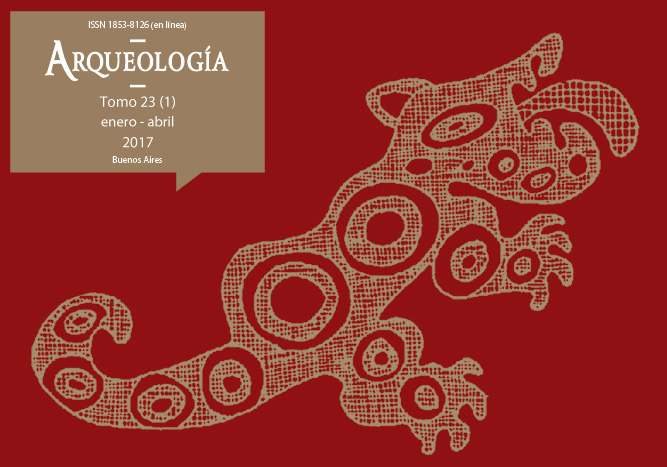The antiquity of human occupation in central-west Chubut: new data from the Genoa valley
Keywords:
Patagonia, Human skeletal remains, Genoa Valley, Middle Holocene, Hunter-gatherers
Abstract
The Genoa River Valley, is located in the Central-West sector of the Chubut Province. Systematic archaeological investigations in this zone began in 2012, focusing on the town of José de San Martín. Based on information obtained during this fieldwork, and that from the previous study of the nearby town of Rio Pico, our initial expectation was that human occupation of the Genoa Valley occurred in recent times. In this paper, however, we present data on human skeletal remains from the Fabiana Elizabeth archaeological zone, which dates to the Middle Holocene. This leads us to extend the time-depth of human presence in the area. We present the results of the field survey and the cotext of the finding, as well as the bioarchaeological and taphonomic analysis of the human skeletal remains. These results are discussed within a regional context.Downloads
Download data is not yet available.
How to Cite
Scheinsohn, V., Dahinten, S. L., Gómez Otero, J., Rizzo, F., Leonardt, S., Tchilinguirián, P., Millán, A. G., Kuperszmit, N., Carpio González, M., & Beroqui, B. (1). The antiquity of human occupation in central-west Chubut: new data from the Genoa valley. Arqueología, 23(1), 109-124. https://doi.org/10.34096/arqueologia.t23.n1.3661
Section
Reports
Authors who publish in this journal agree to the following conditions:
- Authors retain copyright and yield to the journal right of first publication with the work registered with attribution license Creative Commons, which allows third parties to use the published always mentioning the authorship of the work and first publication in this magazine.
- Authors can make other independent and additional contractual arrangements for the non-exclusive distribution of the version of the article published in this issue (p. Eg., Inclusion in an institutional repository or publish it in a book), provided that clearly indicate that the work was published for the first time in this magazine.
- It allows and encourages the author / s to publish their work online (eg institutional or personal pages) before and during the process of revision and publication, as it can lead to productive exchanges and greater and more rapid dissemination of work published (See The Effect of Open Access).





(1)13.png)






1.jpg)
1.jpg)


13.png)
1.png)


(1)1.png)









